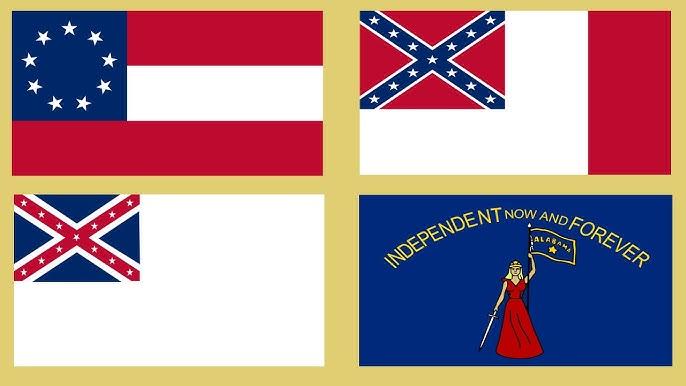Confederate States of America flags are numbers of history often with ambiguities. To others, they may be viewed as representing Southern heritage or Civil War history. Still, for many, they are seen as instruments of remembrance of a heritage tainted with slavery and oppression. A consideration of the meaning of these flags must look beyond their appearance and use during the Civil War and probe into how their symbols were reframed in the years since. This blog endeavors to dissect the history, variants, and controversies of these Confederate symbols and offer insight into their meanings and continuing social influence.
The Three Official Flags of the Confederacy
The Confederate States of America employed three national flags throughout the Civil War, each one denoting a different phase in the brief history of the Confederacy. Each flag was adopted for military, political, and cultural reasons but then altered as the war progressed and the need for distinctive symbolism became stronger.
The Stars & Bars
Symbolically, the "Stars and Bars" represented the Confederate states' need to maintain a link to American heritage while declaring their independence. But as the Confederacy grew to encompass more states, more stars were added to the canton, further complicating its practicality in war.

The "Stainless Banner"
The purpose was to create a clearly Confederate identity while paying tribute to the troops who were fighting under the battle flag.
Though praised for its brazen symbolism, the design possessed a major flaw in that it could easily be confused as a flag of surrender when wind conditions were calm. Regardless, the "Stainless Banner" still qualifies as one of the more identifiable Confederate national designs because of the inclusion of the now-famous battle flag.
The Blood Stained Banner
The Confederacy's third and last national flag, introduced in 1865, was informally referred to as the "Blood-Stained Banner." It kept the battle flag canton of the "Stainless Banner" but introduced a vertical red stripe on the fly end of the white field to reduce confusion with surrender flags. The government soon fell apart later that year, however, leaving the "Blood-Stained Banner" a little-used emblem of a vanquished Confederacy.

Arguments for Preservation
Those in favor of preserving and exhibiting Confederate flags claim they are an important part of history. They see the flags as a way to recognize and learn about the history of the Civil War, respect those who fought in the Confederacy, and save Southern heritage.
To them, the flags represent regionalism and cultural identity, not promotion of the Confederacy's pro-slavery ideology. Removing Confederate flags from public places wipes out history, they say, and simplifies a multifaceted history.
Criticisms of Confederate Symbols
Critics argue that Confederate flags are irrevocably tied to racism, slavery, and oppression. They believe that these symbols symbolize a rebellion against the United States and a struggle to maintain the institution of slavery. For many, especially African Americans, Confederate flags are painful reminders of systemic injustice and violence.
Comprehending the Complexity of Symbol
To some, they serve as significant historical artifacts and reflections of Southern identity. To others, they symbolize systemic oppression and a legacy of racial injustice.
Working through this complexity means recognizing the historical background in which these flags originated and the meanings thereafter placed upon them. Through knowing their complex history, we are able to have more constructive discussions regarding their place in society. These symbols ultimately serve as a reminder of the necessity of working through history and not leaving it as static or unexamined.
For historians and inquisitive minds, studying symbols such as these can provide greater insights into the influences that make up our communities, identities, and cultural history.
The History and Controversy of Confederate Flags of America